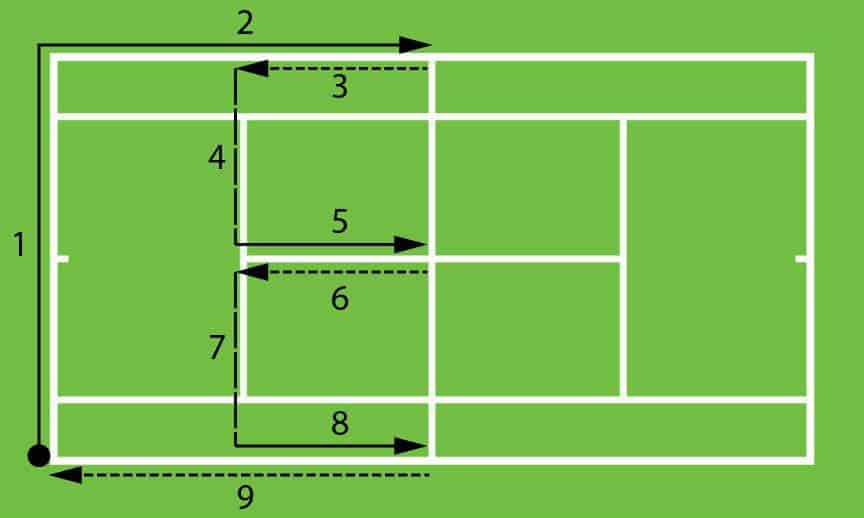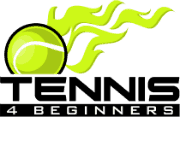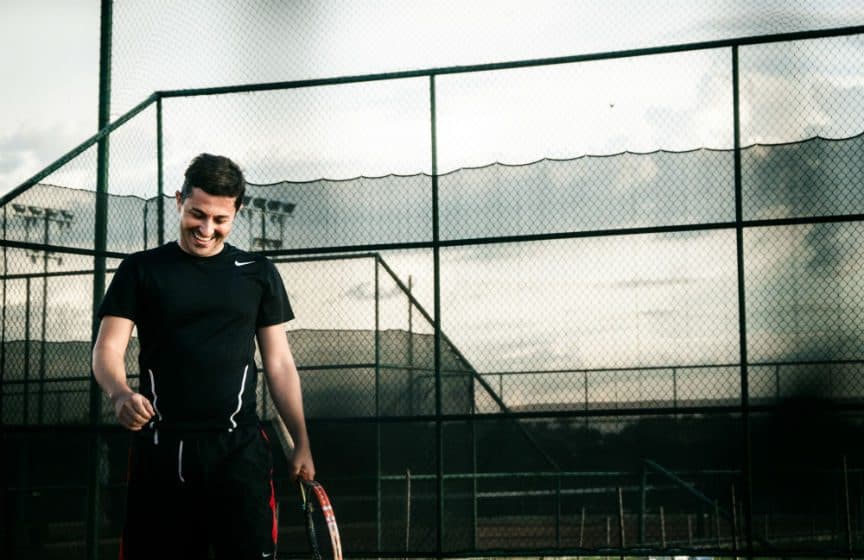While you typically want to train with a practice partner, sometimes no one is available or you simply want to get out and practice on your own to improve your game.
There are a few ways to make the best of your time while practicing on your own. Undoubtedly the best way is by using a ball machine to feed you groundstrokes, volleys or overhead shots. An alternative is to hit against a wall or backboard. You can also practice your serves on your own, self-feed balls to practice your groundstrokes, or work on your footwork or overall conditioning.
While not as effective as hitting against an opponent, there is definitely a time and place to practice tennis alone. It can help develop your consistency and improve your strokes.
Here are 5 ways to practice tennis alone, with or without additional equipment.
1. Practice Using a Ball Machine
Possibly the best way to practice alone is using a ball machine. With a ball machine, you can train just about every aspect of your game other than the serve.
You can set up the ball machine to feed you forehands and backhands in combination with overhead shots. You can also approach the net and practice your volleys.
Good ball machines will allow you to adjust the angle, timing, and speed. You can also set them up to alternate between different types of shots or sides of the court.
Unfortunately, ball machines tend to be relatively expensive. One option, however, is to rent one out from your local tennis shop. If you are considering buying, you can rent one out first to try it out.
If you do decide to purchase a new ball machine, one of the best machines for the money is the Spinshot Player. This machine has all the advanced features you need, including speed, spin, height, angle, and feed rate and you can adjust any of these settings using your mobile phone.
2. Hit Against a Wall or Backboard
Hitting against a wall or backboard is a time-proven way to improve your game. The best part is if you have access to a wall, it costs nothing.
If you can’t find courts with a backboard, you can sometimes find areas of a building with no nearby windows (this is important) and a concrete or asphalt floor surface.
Another alternative is to find an interior gym with a wood floor or a racquetball court to practice on. Walls or backboards allow you to practice just about any stroke, including your serves.
One thing that is important when practicing against a wall is to aim consistently at an intended spot on the wall. You can even use low stick painter’s tape (make sure it is tape that comes off easily) to create a target.
3. Practice Your Tennis Serve Alone
The serve is something you can practice on your own without the need for an opponent. Since it’s a critical part of the game of tennis, this is a great time to practice both your first and second serves.
You can even keep score by tracking the serves you make or miss. Say you get your serve in, that counts as a point. If you double-fault, then it’s a point against you.
If you want a more challenging scoring system, you can deduct 2 points or more for a double fault. You can also score it so that first serves count as one point, second serves as 0 points, and a double-fault as -1 or -2, etc.
If you want an even greater challenge, you can only score points if they are on the intended target within the service box. For example, down the line, deep corner, down the middle, etc.
You can use cones or saucers if you have them, or even low stick painters tape to section off the specific parts of the box you want to target. This will greatly help improve your consistency.
4. Self-Feed Balls on Your Ground Strokes
You can also practice your strokes by self-feeding the ball and playing off one bounce. As with the service drills, you want to make sure that you target specific areas of the court to make the drill more effective.
For example, decide where your shots are going to go, deep corner, down the line, centerline, etc. Also, decide what type of shot you want to hit beforehand: a short drop shot, deep topspin shot, slice, etc.
By deciding beforehand what type of shot and where you plan to place it, you can hold yourself accountable for the shot you take. As with the serve, you can use cones, discs, or low-stick painter’s tape to section off areas. Use a tennis basket/hopper to hold the tennis balls while you are self-feeding.
5. Practice Your Footwork Skills
Practicing your footwork skills and training to improve your overall conditioning is one of the best things you can do on your own. This is a critical part of developing as a player, and you can take advantage of practicing alone to do this.
Running line drills can be a very effective exercise for improving your footwork. You can also improve your overall stamina by doing long-distance running. The combination of the two will provide a good balance.
You can use cones or saucers to section off areas of the court and practice shuffling your feet, backpedaling, sidestepping, sprinting and stopping, and more.
Here are some drills you can do to help improve your footwork.

Line Drills
- Start at either corner of the court, where the doubles line and baseline intersect. Sprint from one side of the baseline to the other.
- Once at the corner, turn towards the net and sprint along the doubles line and touch the net.
- Backpedal from the net to the service line behind you.
- Sidestep along the service line from the doubles line to the centerline.
- Sprint forward and touch the net along the centerline of the service box.
- Backpedal along the centerline until you reach the service line behind you.
- Sidestep along the service line until you reach the doubles line.
- Sprint forward along the doubles line and touch the net.
- Backpedal along the doubles line until you reach the baseline behind you. This is the corner where you originally started.
At this point, you can repeat the same steps as often as you like. It helps to switch the starting corner after about 10 reps so that you are working out both legs and feet equally. Continue the drill until exhausted.
Tennis Ball or Cone/Saucer Drills
- Place tennis balls or cones/saucers on the baseline along the corners of the court and on the center line.
- Place balls or cones/saucers in front of the net on each of the doubles lines and the center line of the service box.
- Finally, place balls or cones/saucers on the service lines at each end of the court.
- After placing the tennis balls or cones/saucers, stand in the middle of the court and sprint towards each one and pick them up.
- Bring them back to the center of the court and drop them into a tennis basket or hopper.
- Continue until finished picking up all of the placed objects.
This is a good drill to not only develop your sprinting ability but also requires you to lunge forward when picking up the objects. A good part of the game involves lunging to get to balls, so this will help strengthen your legs as well. It’s a good idea to alternate which leg you lunge with to work out both of your legs.
Strength training either at a gym or on the tennis court can also be very beneficial to your game. A combination of free weights, machines, resistance bands, and plyometric training is ideal.
Strength training and conditioning is hard work. It will not always be enjoyable, but the benefits of building strength, flexibility, and stamina are important to not only improve your game but also prevent injury throughout the years.
Share this Post

